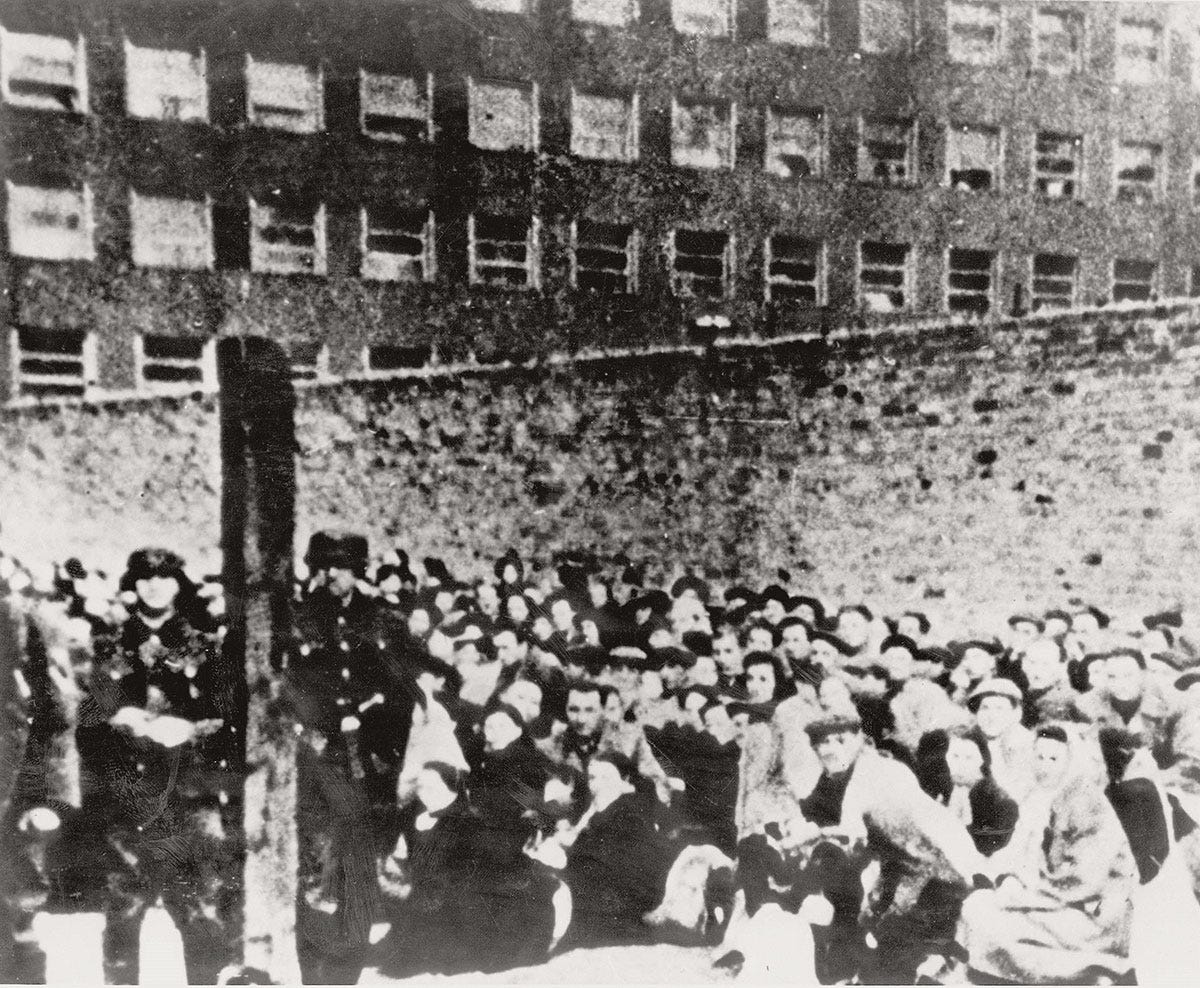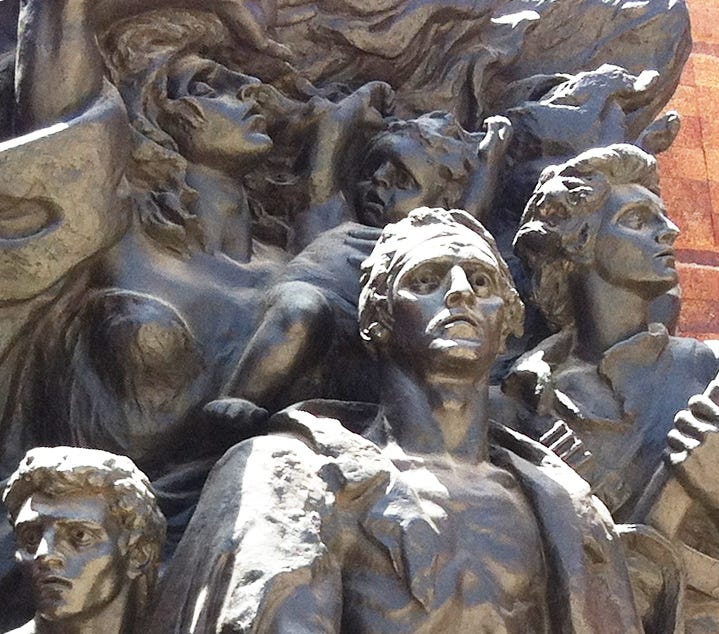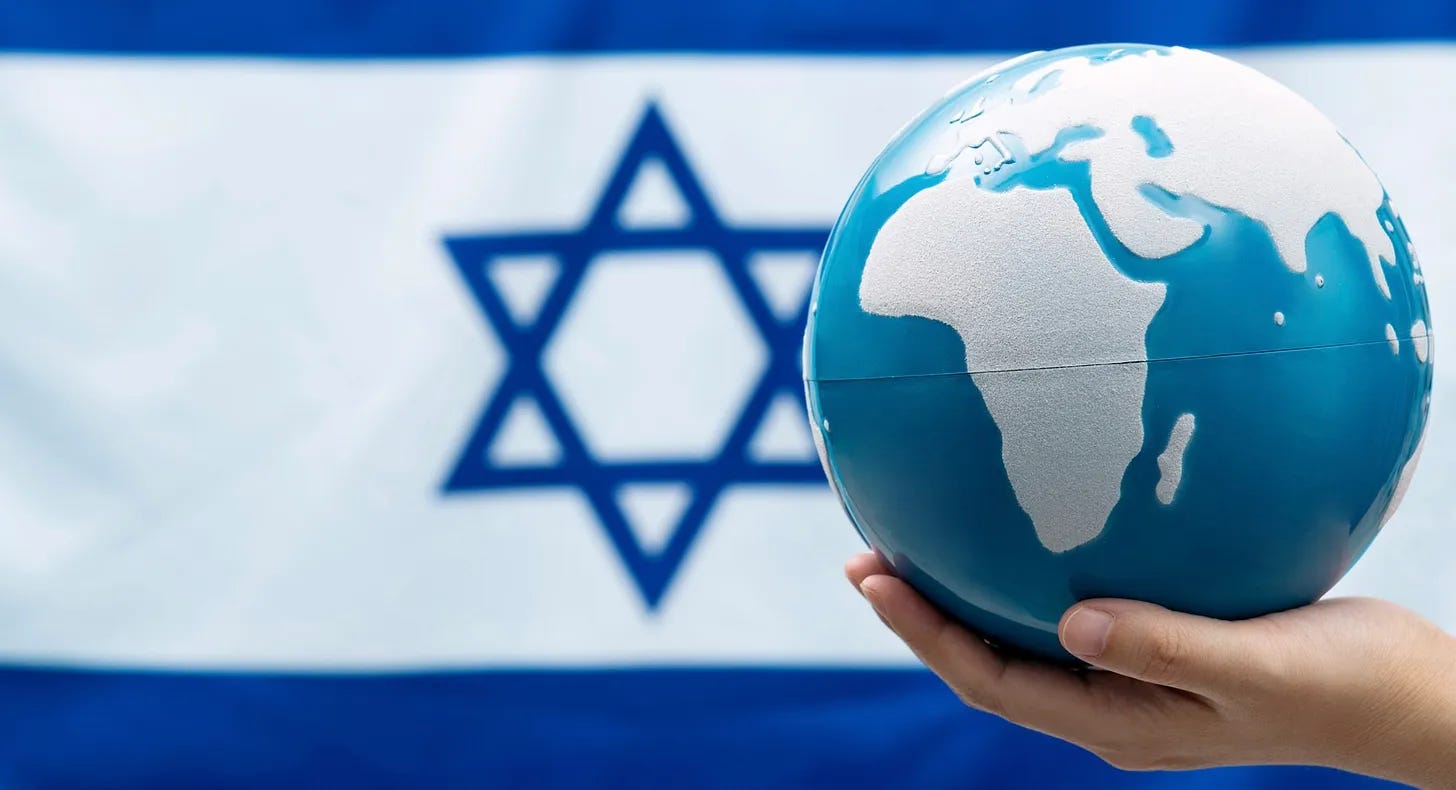Warsaw Heroes, Passover, 1943
"They knew that they would die, but that wasn’t the point. The pride and strength with which they fought foreshadowed a future where Jewish self-defense could meet and defeat any mortal threat."
By Michael Golden
Editor’s Note: Special thanks to our partner Steven Drucker and his Substack on Jewish history, “DUST AND STARS.”
They were rounded up and imprisoned into a barbed wired hell. Packed in like sardines, more than 400,000 of them.
They’d committed no crime nor provoked a single soul. They had no fighting forces; they’d lived peacefully amongst their Polish neighbors and contributed mightily to the country’s economy.
They were Jews. That’s it. Just Jews.
Eighty-one years ago today, on the eve of Passover, a small band of brave prisoners in Poland launched what would become their final front of resistance against their fascist jailers.
Between 1940-1943, 275,000 Jews who’d been incarcerated into the “Warsaw Ghetto” — a three-square kilometer area of Nazi-occupied Poland — were eventually deported to the death camps. Precious few survived.

But during the tail end of that period, two underground Jewish fighting groups — the ŻOB and the ŻZW — joined together into a single force of about 700. It was a ramshackle operation; they were armed only with small guns and grenades. A few automatic weapons and rifles, when they could get their hands on them from the Polish resistance just beyond the ghetto walls.
In January of 1943, the 24-year-old commander of the ŻOB, Mordechai Anielewicz, addressed a message “To the Jewish Masses in the Ghetto." In the widely distributed letter, he clearly voiced the reality that so many had still hoped was not the ultimate truth:
“When we listen to this bitter news, we wait for our own hour to come, every day and every moment. Today we must understand that the Nazi murderers have let us live only because they want to make use of our capacity to work to our last drop of blood and sweat, to our last breath. We are slaves, and when slaves are no longer profitable, they are killed.”
The Jews of Warsaw were not going to let that happen without a fight. No matter what the odds.
On January 9, Hitler’s chief henchman, Heinrich Himmler, visited the Warsaw Ghetto and ordered the deportation of another 8,000 Jews. Within days, the resistance surged into action. Though the tiny Jewish force was largely untrained and still lacking in weaponry, they caught the Germans totally off guard on Jan. 18, using guerrilla tactics to confuse the enemy. They would strike, then retreat or retrench, escaping across rooftops and into bunkers or underground hiding places. And then they would strike again.
The SS killers fought more cautiously, and actually backed off following the clash. Nazis suspended deportations for the next three months; Jews felt like they had achieved a precious victory.
But on April 19, to honor Hitler’s birthday, his murderous minions launched a new extermination operation. The SS Chief in Warsaw was replaced by a more experienced animal named Stroop. Yet when he sent the first few hundred soldiers in, they were once again surprised by both the steely mettle and nimble movement of the Jewish fighters.
At that point, Stroop changed his game plan, making a ridiculously unfair fight even more lopsided. He sent 2,000 soldiers back in to “liquidate” the ghetto — reinforced by tanks, artillery and flamethrowers.
The impending battle had now eclipsed David and Goliath proportions, yet the Jews once again straightened their spines. Of course, it wasn’t enough. How could it be enough. Polish historian Audrey Kichelewski describes how the Nazis finished off the ghetto:
“…by setting the buildings on fire one by one in order to force the Jews out of the bunkers. They used poisonous gas. The fighting was unbalanced because on the opposite side, there were only revolvers and grenades.”
The resistance somehow lasted for another 27 days. On May 16, after it was all burned to the ground, Stroop reported to his führer that “the former Jewish quarter in Warsaw is no more.”
Thirteen thousand Jews were killed during the Warsaw Ghetto Uprising, including Mordechai Anielewicz, who had yet to turn 25. But before he passed, the commander wrote this to his colleague, Yitzhak Zuckerman:
“My life’s dream has now been realized: Jewish self-defense in the ghetto is now an accomplished fact… I have been witness to the magnificent, heroic struggle of the Jewish fighters.”
Thirteen thousand Jews. Beaten, shot, and burned to death. Quantified another way: .02 percent of six million…
Twenty five years ago, after touring the Yad Vashem World Holocaust Remembrance Center in Jerusalem, I sat down in an outdoor area known as Warsaw Ghetto Square. I gazed up at two visually breathtaking memorial sculptures, titled The Warsaw Ghetto Uprising and The Last March.

I still remember thinking on that day what I suspected Mordechai Anielewicz and his fearless band of warriors must have been thinking in the spring of 1943:
One day, Jews will have the capability to defend our people with strength and resolve; to push back any group that materially threatens and/or takes action expressly intended to eradicate us from the planet.
Over 75 years, those circumstances have not been difficult to identify. Only the names have changed.
And for nearly a century, ever since that worst genocidal campaign in human history, generations of Jews have made it an imperative to say “never forget.” The truth: it is not possible to forget. For it happens again and again.
As we are hours away from Pesach, 5784, Jewish hostages have been held in Hamas captivity for 195 days. Release them.
Am Yisrael Chai.
Michael Golden is the Editor-in-Chief of JEWDICIOUS.
From unpacking history and politics to navigating the nuances of family and personal relationships to finding the human angle on sports and entertainment — plus our unsparing take on what’s happening in the Jewish world — the canvas at JEWDICIOUS is limitless! JOIN US!!








Andrew Rashkow deftly navigates between insights of modern physics and the spiritual force underlying all Creation and the spiritual and divinely-mandated role of the Jewish people in the Creation. A pleasure to read.